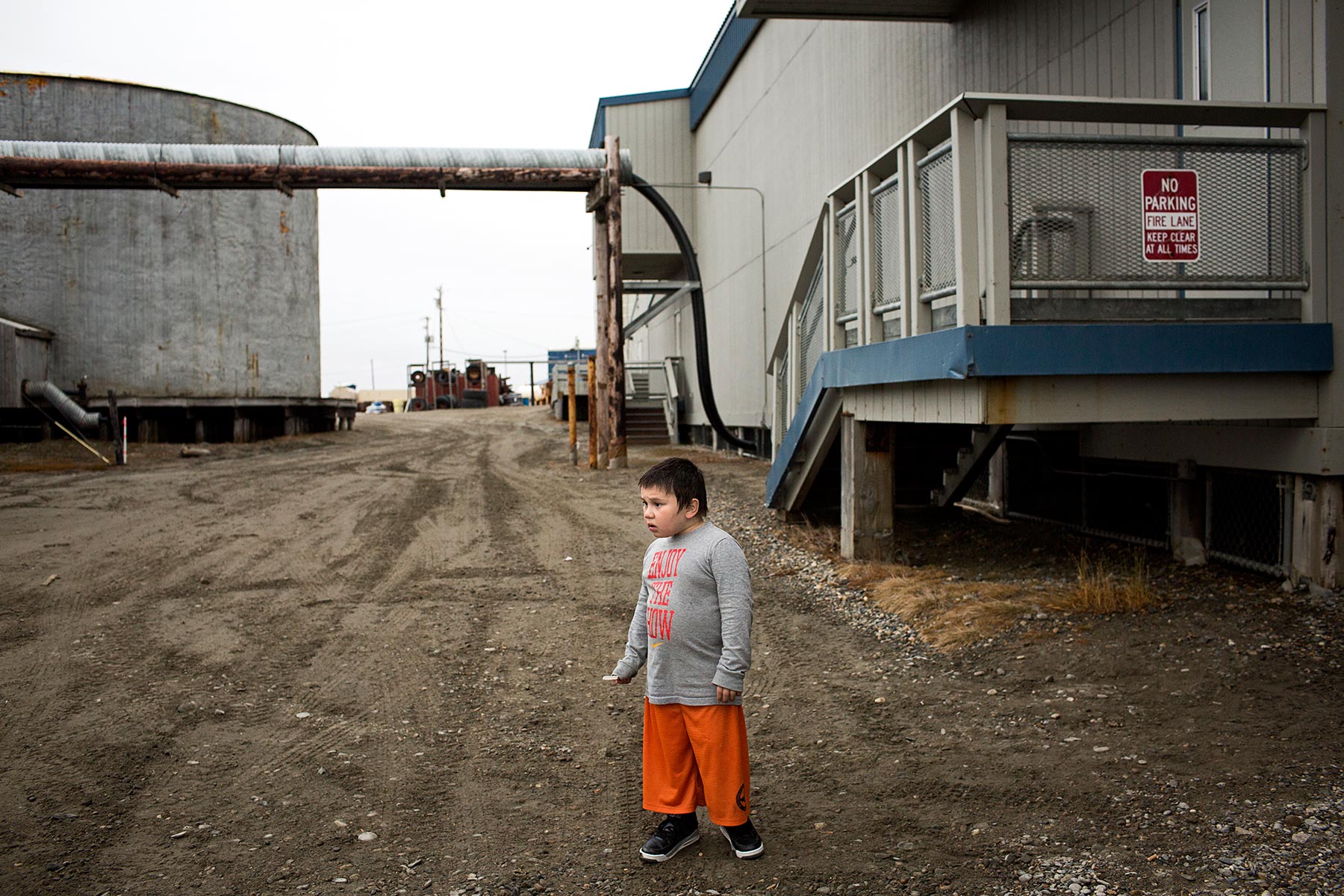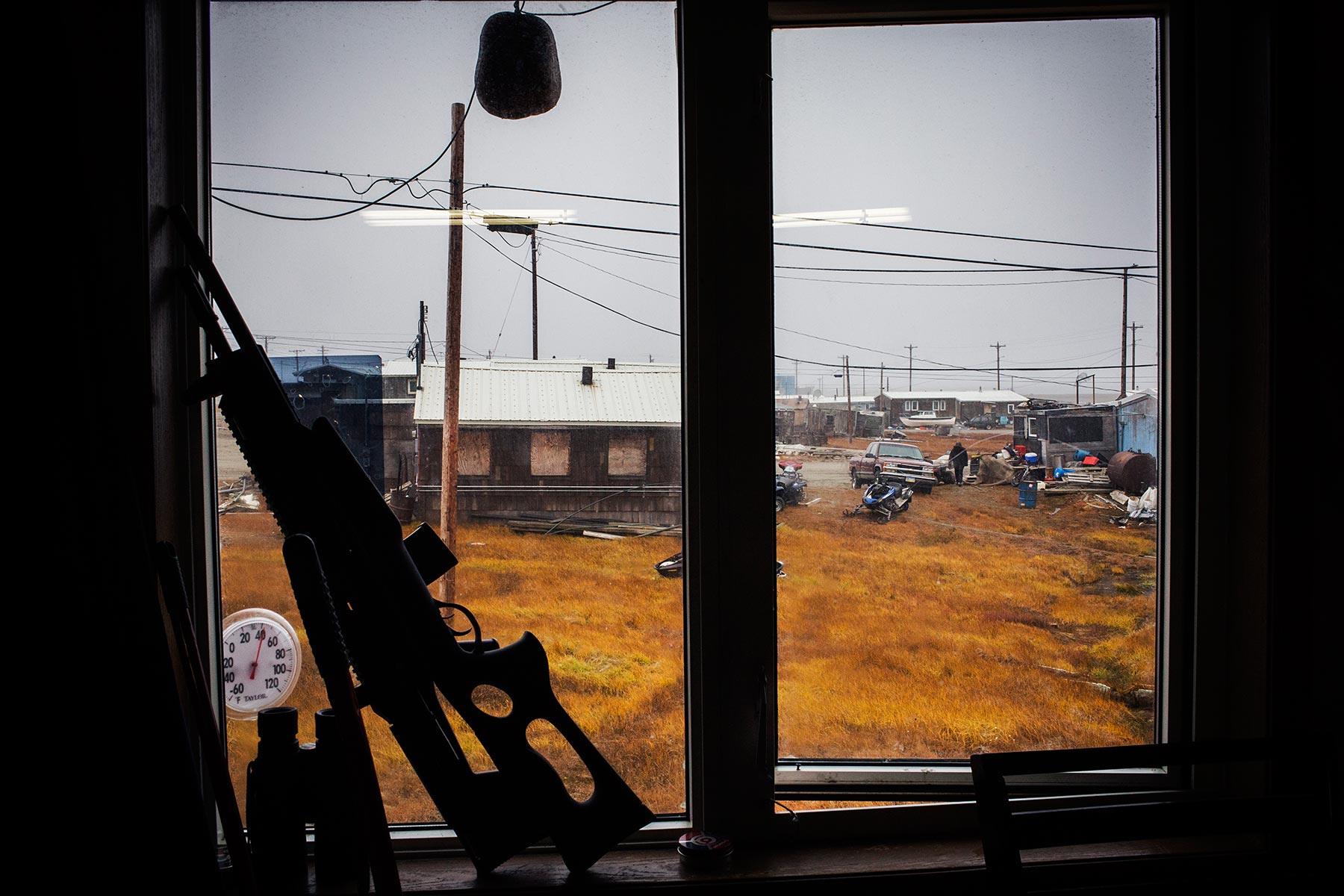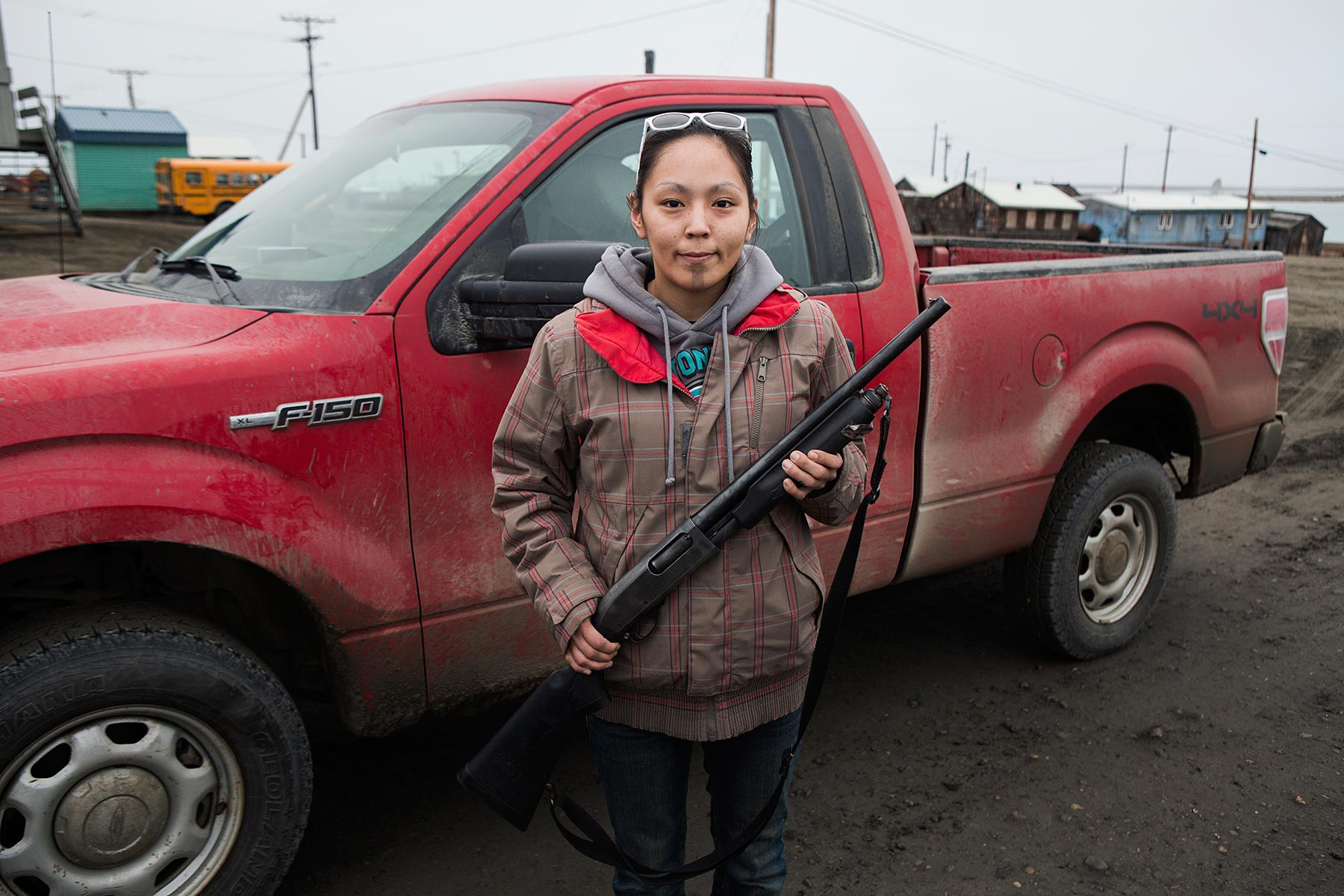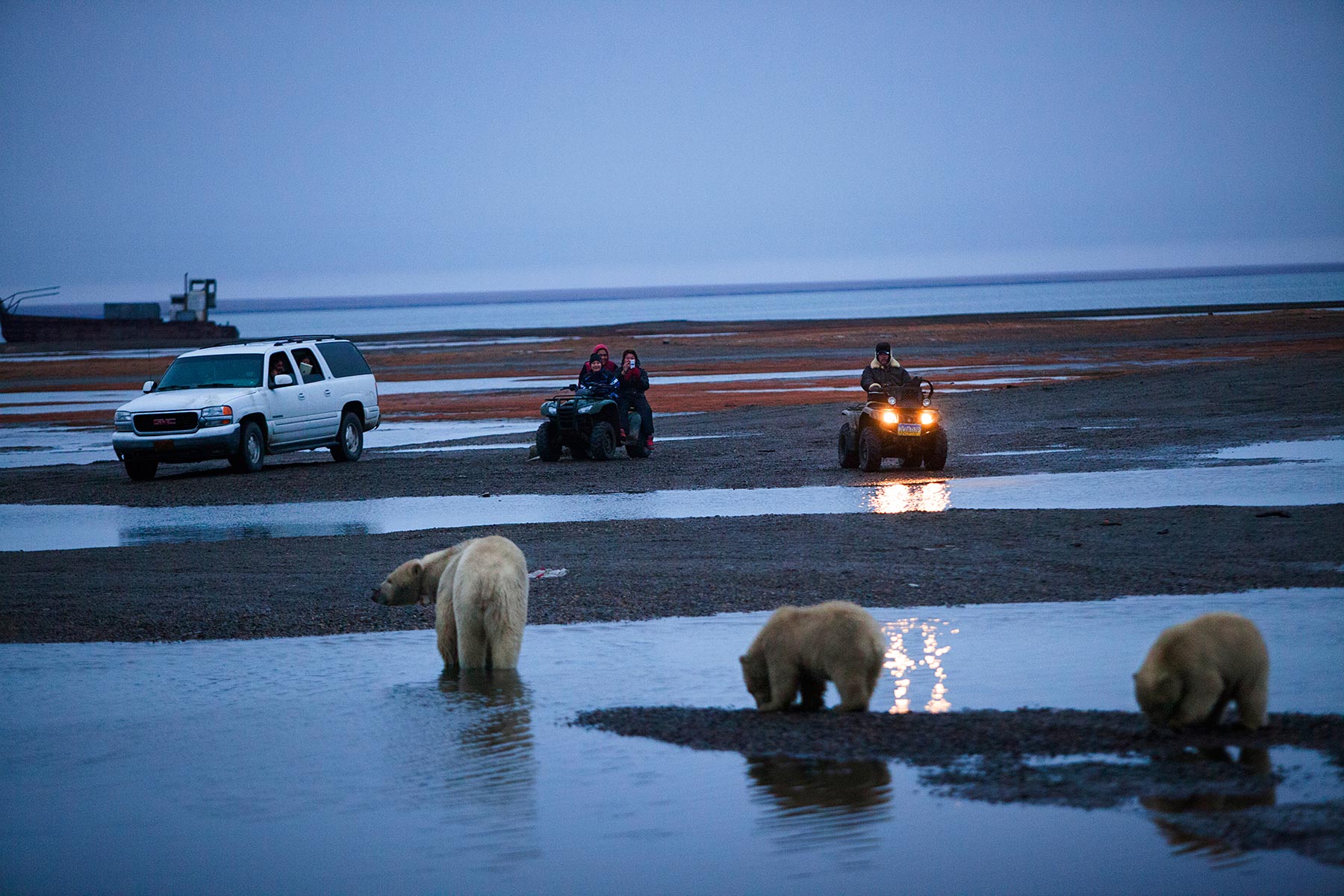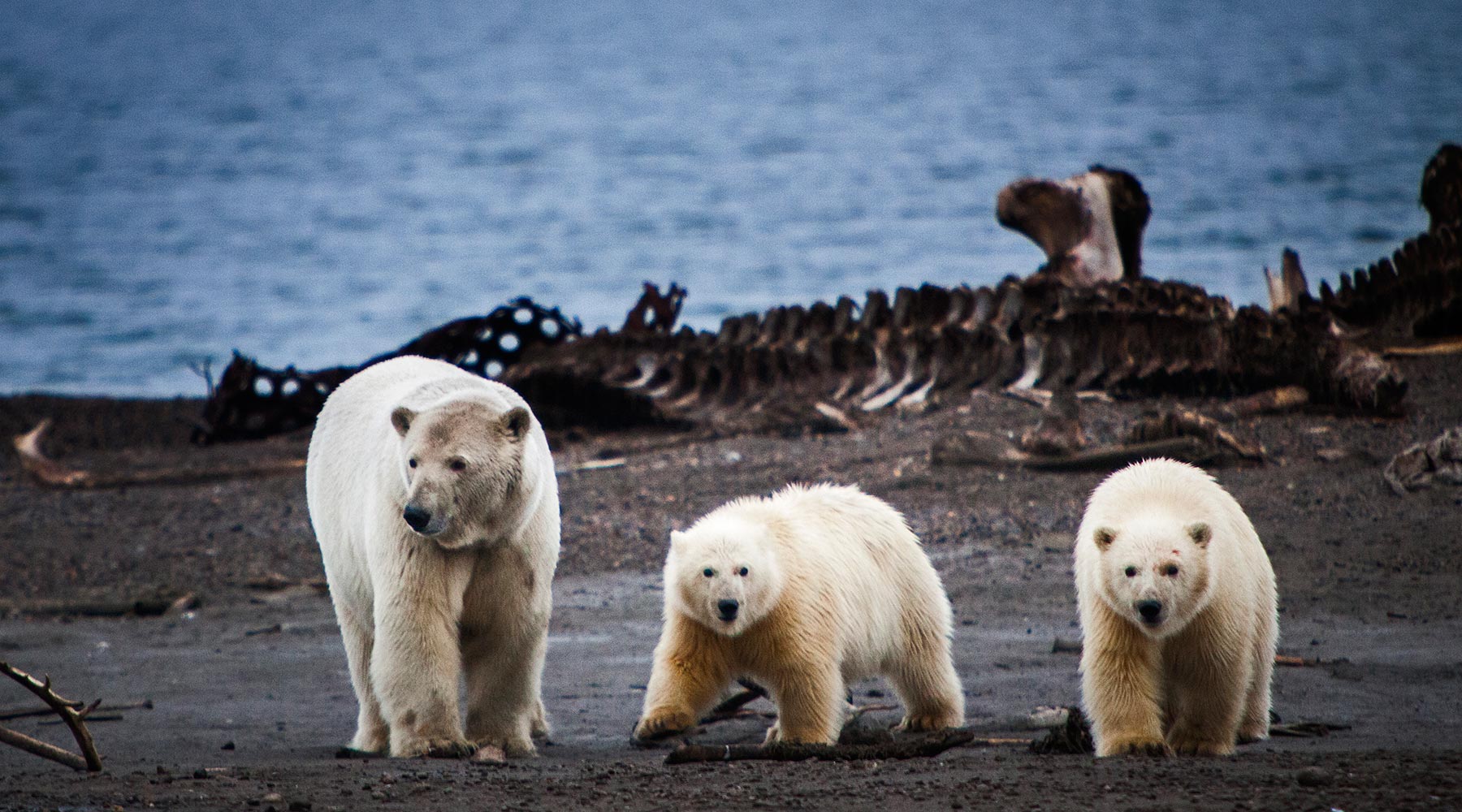
Bear Town USA
As ice vanishes, big changes in a small Alaskan village
By Julia O'Malley for Al Jazeera America
Photos by Katie Orlinsky for Al Jazeera America
Produced by Mark Rykoff
Edited by Katherine Lanpher, Mark Rykoff
Published on Sunday, October 12, 2014
KAKTOVIK, Alaska — In Betty Brower’s memories, there is always ice. Even in the summer, when the sea around Barter Island was open, she could look out and see the jagged shapes of icebergs on the horizon.
Brower is 81 years old, a great-grandmother who has lived all her life along the northern coast of the Beaufort Sea, the last 60 years in this Inupiat village of about 250 people on Barter Island. In the mid-1990s, summer ice began to disappear, she said recently, speaking in Inupiaq as her daughter Marie Rexford interpreted. The period of open water grew longer, she said. And then came the bears.
Polar bears used to spend time on the ice far from shore hunting seals, she said. But when the ice vanished, they began ambling on land more often than before. Soon villagers were seeing more of them than anybody could remember, especially the last few years.
Local people alerted scientists with the U.S. Fish and Wildlife Service. Scientists discovered that the bears, without easy access to the ice, had fewer opportunities to hunt seal. They were smaller than they used to be, and their cubs were less likely to survive their first year, studies found. In 2008 polar bears were listed as threatened under the U.S. Endangered Species Act because of the ice’s decline.
Each summer the Arctic sea ice retreats until late September, when it starts its advance back toward the coast. The minimum area covered by sea ice in September has declined 14 percent each decade for the last three decades, according to the National Oceanic and Atmospheric Administration. The average air temperature in Barrow, an Arctic community near Kaktovik, has increased 5 degrees since 1949, according to NOAA records.
The warming of the Arctic has changed life in Kaktovik in many ways. Lack of sea ice means more storm surges. Big waves are slowly eating away at the island. They have swallowed up the airport’s runway more than once, foiling already spotty air travel. A new runway is under construction on higher ground.
Ice cellars, traditionally used for food storage, were cut decades ago into the permafrost. But the permafrost is melting. Many cellars are now filled with water.
The large population of polar bears on land is causing public safety concerns for villagers and drawing a steady stream of outsiders — scientists, journalists, filmmakers, oil executives, government officials and tourists with conspicuous long-lens cameras.
Kaktovik (pronounced KOCK-toe-vick) sits on the edge of the Arctic National Wildlife Refuge, a 19.2 million acre body of protected public land. Controversy over oil development on the refuge’s coastal plain has been simmering more than 30 years, but the land remains untouched.
The village is a windblown collection of buildings, many on stilts, set along a few streets carved into the grassy tundra. There are two small stores, a clinic with a health aide, a military radar facility, two hotels (with the village’s two restaurants), two churches, two village police officers, a school with 60 to 70 students and a community center that hosts bingo on Thursday nights. Kaktovik is often shrouded in fog, and flights, even for medical emergencies, can be delayed for days.
Villagers harvest three bowhead whales each year, butcher them and distribute the meat. In September a few weeks after the whale harvest this year, piles of meat still sat outside some houses, left to age in the air. After the butchering, villagers place massive curved bones, scrap meat and blubber in a pile on the edge of town. Bears have grown accustomed to scavenging it.
“Bears basically are learning that they can use that as an alternative food source during the open water period, when otherwise they would be fasting,” said Susi Miller, a U.S. Fish and Wildlife biologist who has been monitoring polar bears in Alaska for over 20 years.
Whale meat is a rich food source, she said. Some years the bone pile may help some of the bears survive.
The bone pile and aging meat are tempting for the bears. Fish and Wildlife is working with the villagers to find more secure ways to store it. (Bears were able to get into a prototype storage locker.) In part because of the bone pile, there are now typically more polar bears around Kaktovik in the fall than any other place along Alaska’s coast, Miller said.
One night last fall, Brower’s grandson Eddie Rexford heard dogs barking outside his house. He stumbled out the door to find a polar bear and two cubs in his shed. His family has one of the village’s few still functioning ice cellars. Whale meat, or muktuk, was stored inside it, stacked neatly in a plastic tub.
“These ones broke down our cellar door, and we had to put them down,” he said. One cub hide hangs on the outside shed wall now. Another is draped over a table amid the whaling harpoons and butchering tools.
Interactions between polar bears and humans are becoming common. This year there are about 30 bears in the vicinity of the village. Last year there were more than 60.
“It was hell,” said Nora Jane Burns, Kaktovik’s mayor. “They were coming in every night. They were relentless. It’s scary. Sometimes they will linger around until 8 o’clock, and then you have kids walking to school.”
For years the village has had a nighttime polar bear patrol. Recently it consisted of Ruby Kaleak and Roland Kayotuk rolling around town in a red pickup, armed with shotguns, listening to Hank Williams and drinking Cokes to pass the time.
The idea is to deter the bears so they have negative associations with people, Kaleak said. She hadn’t shot any, but she was new to the job. Mostly, she said, “You just chase it off with the truck.”
Every night after dinnertime, locals ride four-wheelers and trucks past the runway and the vacant Cold War–era Air Force hangar to the end of a sandy spit, where there is a good view of the bone pile. Some get closer than others.
The bears swim low in the water, just eyes and ears and a few slivers of back above the surface. They emerge on the beach, shaking off like dogs. Cubs trail sows, tumbling over driftwood, all on their way to the bones.
It used to be that just villagers and a few construction contractors knew about the bear viewing, said Burns. “They told their family and friends, and we told our family and friends,” she said. “And now [the tourism] is kind of like a pest … It’s good and bad. We have both.”
A few hundred tourists make the trip each year. Local entrepreneurs capitalize on the high demand for lodging and tours. A stay in one of the village’s two modest hotels might run close to $300 a night, with meals included. A short boat ride to catch a view of the bears runs $300 to $500 for half a day.
Locals sometimes grow tired of people taking pictures of their houses without permission. And the tourists fill the planes, making it hard for elders to get out for medical appointments, she said.
High school students have been trained as polar bear ambassadors. Accompanied by biologists, they deliver presentations at both hotels, telling tourists to ask locals before taking pictures and to keep a safe distance from the bears.
“They’ll usually leave you alone unless you start harassing them somehow,” ambassador Chelsea Brower, 16, advised recently.
Like in many villages in rural Alaska, many people in Kaktovik are deeply Christian. Brower and her daughter said the warming climate was part of God’s plan. There was no use in worrying, only in praying, Marie Rexford said.
Brower, sitting in her wood-paneled living room where her grandchildren come and go, said that now the clouds fall into patterns she doesn’t recognize. Even the stars look different, she said. Her elders foretold this time would come.
“It’s happening the way [the elders] said it would happen,” she said. “They said it was gonna be like summertime all the time.”
